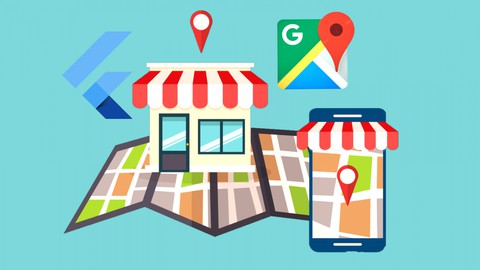Description
In this course you will learn and implement Google APIs using Flutter.
The Places API is a service that accepts HTTP requests for location data through a variety of methods. It returns formatted location data and imagery about establishments, geographic locations, or prominent points of interest.
Create location-aware features to make detailed location data easily available to your users. The data available through the Places API is built on one of the most accurate, up-to-date, and comprehensive place models of the real world. Here are example use cases for applications:
- Display condo rentals within major metropolitan areas with results targeted specifically to cities.
- Include place details in a pickup or delivery status update.
- Display a list of parks in an area along with user-submitted photos and reviews.
- Provide people planning trips with contact information, reviews, and price levels for establishments along the way.
You can use the Places API to include the following features in your applications:
- Provide place search results from different types of users queries, such as text input, nearby locations, and ambiguous or categorical user queries.
- Enable autocomplete features for different search types, either specific text queries or categorical queries.
- Refine the type of details returned about a place, such as operating hours, a summary, user reviews, and a photo.
- Add high-quality photos to locations served by your application.
The term geocoding generally refers to translating a human-readable address into a location on a map. The process of doing the opposite, translating a location on the map into a human-readable address, is known as reverse geocoding.
Geocoding is the process of converting addresses (like a street address) into geographic coordinates (like latitude and longitude), which you can use to place markers on a map, or position the map. Reverse geocoding is the process of converting geographic coordinates into a human-readable address.

